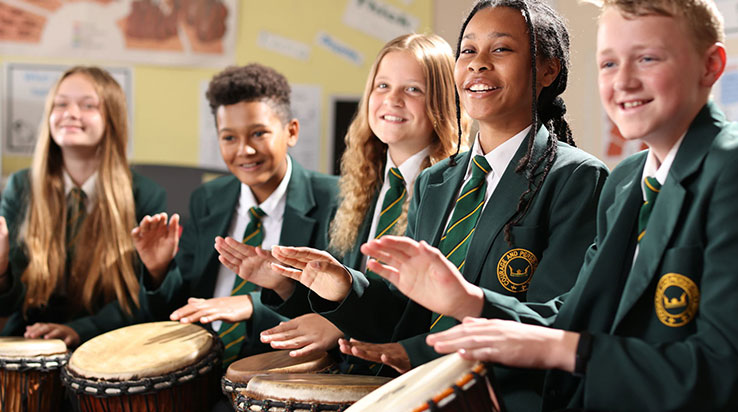
The background
The King Edmund School (also known as KES) is a lively comprehensive in the town of Rochford in South East Essex – attracting students from both Essex and the neighbouring borough of Southend. With around 1,600 students, the school has around 270 pupils per year group, with a growing Sixth Form. Given the mixed catchment area, the school has an above average number of students on free school meals and in receipt of the pupil premium, leading to a number of literacy challenges and extra work for teachers during the pandemic – often faced with deprivation issues beyond their education remit.
The school ethos is built upon the phrase “In Pursuit of Excellence”, where everyone in the school sets out to support every student as they strive to achieve the very best they can in every aspect of school life – from their studies to participation in school shows, sporting activities and so on.
RM has supported the school since the year 2000 – providing technical support to the school’s network team, supporting the SLT and teachers across the school in pursuing their own goals for teaching and learning.
“Prior to coming to KES, I had worked in schools that used RM, and some that didn’t, and I would say that my views of the company were mixed. But my opinion has changed completely – despite that initial scepticism, I am now an advocate of what RM does and I can count on one hand the number of significant issues we have had with our network in the eleven years I have been here”.
Jonathan Osborn, Headteacher
KES is blessed with strong teams across all parts of the school. As a result, the relationship with RM works well – if a member of the school team wants to try something, they reach out to the school’s network team who work with RM to assess the options – and implications – of their idea – and wherever possible the RM team find ways to make it happen.
“For me technology is only as good as the people implementing it”.
Jonathan Osborn, Headteacher
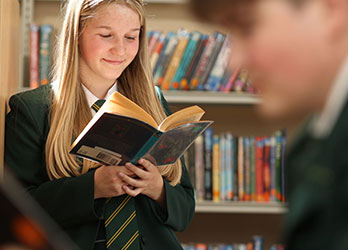
For a busy headteacher, having a talented team around you is key. People who focus on solutions rather than excuses. That principle goes beyond the immediate school SLT, to include those who support the running of the school behind the scenes – people like RM.
“RM do a good job keeping me and our network team up-to-date with developments. The Support Newsletters are useful in showing us where the world of technology is going, and the RM team work closely with our network team to ensure our school stays ahead”.
Jonathan Osborn, Headteacher
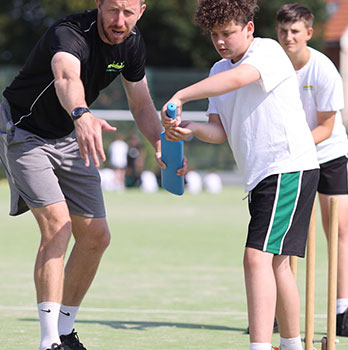
As well as technical support, RM provides key software – such as RM Unify – their identity management system.
“Prior to the pandemic we used RM Unify a little, but when lockdown came it was a godsend – acting as a one-stop window to almost all of the applications that people needed. Its single sign-on functionality made a huge difference for everyone”.
Brenda Vallance, Systems Manager

The role of technology in a modern school environment
Prior to the pandemic, there was a good use of technology in the school – teachers used interactive whiteboards, they shared files electronically, and sent and received a lot of emails. However once lockdown came, everything needed to move up a gear. Whilst the school had always encouraged teachers to try out new ideas – such as the Seneca online learning platform – it is probably fair to say – albeit with hindsight – that it was best described as an “entry level” appreciation.
That said, there were certainly pockets of innovation, with technology champions across the school. This was especially true in the Admin Team, where the Business Manager had invested in a Managed Print solution some 5 years before the pandemic, saving the school £30-40k per annum.
But the pandemic changed everything. Almost overnight the school had to “up its game”, embracing the role that IT could play in their school. Pre-lockdown the entire school network was on-site (although they did have a Microsoft Office 365 tenancy). They now needed to move it all into the cloud… quickly. Pre-lockdown there was some use of OneDrive amongst staff, but no pupils were using it.
The school did have CC4 remote access to connect to some of their systems from home, but they needed to go way beyond that.
“We had to do a year’s worth of IT change in 2-3 weeks… which we achieved… with remarkably few issues”.
Brenda Vallance, Systems Manager

As the school looks back at the pandemic, they describe it very much as a journey – addressing each day – and each challenge – as it came. Their approach to the first lockdown was very different to how they responded to the second. In technology terms, Show My Homework was the software of choice for Lockdown One; by the second lockdown they were ready for Microsoft Teams:
- At the start, a significant number of students did not have the right equipment at home to engage fully with something like MS Teams – it is hard to run online lessons on a mobile phone. As a result, the school had to do a lot of work in the first few months providing as many children as possible with the right devices.
- The ephemeral nature of online lessons means that if you miss the lesson, it is gone – this could be due to a lost WiFi connection or parents (or siblings) needing to use the home laptop at that time. This was seen as a limitation with a rigid timetable such as online lessons on MS Teams, as whilst the school sought to mitigate this issue with written back-ups to lessons, it served to disenfranchise many students.
- The version of MS Teams available in March 2020 was very different to the one offered in January 2021, so the school felt fully vindicated in delaying their move.
“For the first lockdown we felt it was all about continuing our students’ education, but in their own time. Many were sharing laptops with others in their household, so may not have been able to get online at a set time to join a lesson. So we centred our teaching around Show My Homework – assigning work for students to do – and submit – each day, but at the time of the day that suited them. Microsoft Teams would not have worked for us at that stage”.
Jonathan Osborn, Headteacher
Despite this, from the outset the school geared up its support mechanism – every child received a wellness call each week, as well as checking assignments had been submitted on Show My Homework each day. Names of children who were not engaging were passed to a team of behavioural support staff who would phone or go to the child’s home to see what needed to be done. This had the added benefit of demonstrating to parents that they were being supported.
“We used a combination of carrot and stick to get engagement. We ran house competitions, fun things like getting children to cook meals for their parents, videoed assemblies, an online Sports Day where children timed themselves etc. But we also made it clear that if a child was not engaging they would have to physically come into school, which – compared to the safety of their home – was sufficient for most”.
Jonathan Osborn, Headteacher
As a result, the school were pleased to get around 90 percent of children engaged – defined as “returning at least half of the work they were set, each day”.
By the time of the second lockdown – in January 2021 – KES felt even more prepared. Many of the concerns they witnessed in the first lockdown – such as the lack of devices and software concerns – had been overcome, and the school were comfortable making the next step, which for them was MS Teams – in part because of its integration with RM Unify and Office 365 – but also its proven levels of security and GDPR compliance, and recommendation from RM.
“In some respects, our move to online lessons was driven by the direction of travel of the Government – other schools had made that transition, and we felt we should too. The move went well, and was certainly worth the effort”.
Jonathan Osborn, Headteacher
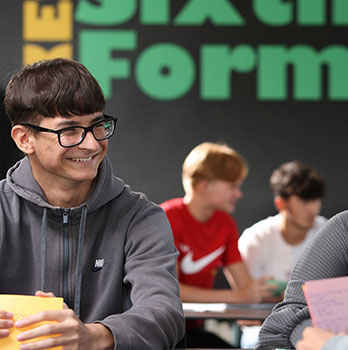
Like many schools, KES spent big parts of the Autumn Term in 2020 preparing for what was an inevitable second lockdown. This time they knew it would be harder, with wintery weather and fatigue setting in, so they worked at preparing and training their staff, providing them with modern graphics tablet devices and headsets, so that – as much as possible – they were prepared for everything that would be expected of them.
“RM played an important role for us in setting up, configuring and getting all the policies right for our move to Microsoft Teams – freeing the school up to worry about everything else in those critical few weeks”.
Jonathan Osborn, Headteacher
Working together
It is imperative that we all seek to identify benefits arising from the pandemic. One of those is probably the view that parents now have of their child’s school. For KES, they believe that the level of respect for what a teacher has to do, and a recognition for how hard they work, has improved.
“We definitely hear lots of parents comparing schools, and we gained significant numbers of new students because of the perception of our levels of engagement”.
Jonathan Osborn, Headteacher
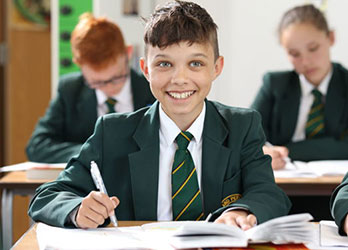
That said, memories fade fast, and as the country emerged from lockdown, with shops and businesses re-opening, it was clear that some of the mental health challenges that had developed during the crisis would start to come home to roost. It will therefore be quite telling whether parents continue to recognise the steps that schools took during the pandemic, or whether it will all be forgotten in an instant.
Not to be forgotten are the Governors of a school like KES. Keeping them in the loop, ensures they remain supportive and strong advocates of all that the school is there to do. For KES, this was a critical part of the chain.
Sharing best practice
- Leadership from the front – the team at KES could see the first lockdown approaching, so the headteacher spoke to his SLT, his System Manager, and then to all staff – laying out the challenge and eliciting feedback. The whole school felt involved in the decisions they had to take. No-one believed anything was being imposed on them, nor that it would fall on just one or two people’s shoulders. It was a proper team effort.
- Planning, planning and more planning – KES were reasonably pleased with how they responded to Lockdown One, but they knew that that was just the start, so they used as much time as they could in the Autumn Term of 2020 to prepare for what was fast becoming inevitable – the second lockdown. That effort repaid itself many times over.
- Creating separate email address for support matters – one of the plans from the first lockdown that the school continued to use, involved the school setting up separate email addresses for parents to use for pastoral, curriculum and technical issues when they had a query. Each email address was manned by members of SLT and support staff. Whilst this did not reduce the number of queries (hundreds of forgotten passwords in the first 10 days!), it did help channel questions to the best people to answer them and reassured parents the school was still there supporting them.
- Headsets for teachers – whilst a relatively minor thing in comparison, many teachers had children of their own at home during the lockdown, so headphones gave them a level of privacy for teaching their classes.
Securing our future
As schools return for a new school year in Autumn 2021 – after over a year’s disruption to education – it is good to take stock and identify what can be taken forward as a lasting legacy:
- Technology and schools. Those schools that engaged with technology have a far better appreciation for the role it can play in our education system, than those who ignored it, or simply paid lip service to it. Whilst online learning will never be a substitute for face-to-face tuition, the technology that was employed has a big role to play in enriching the learning experience for all.
- Refuse to accept expressions such as “it cannot be done”. The pandemic period showed that anything is possible. At the same time that all schools were preparing for children to return in the Autumn 2020, KES were facing a further crisis of their own following being told 10 days before they were due to welcome everyone back, that they could no longer use 40% of their school buildings. After what they had endured over the preceding six months, this was treated as just another hurdle, and in the space of those 10 days, they turned their sports hall into eight new classrooms, dining room into 2 classrooms and had reappropriated as many offices and workspaces as they could.
- Never look back. If we allow everything to return to how it was prior to March 2020, it will have been a shocking waste of effort for everyone. Instead we must move forward with our newly gained skills and recently acquired assets:
- From September 2021, KES will take a different approach to homework – with teachers using MS Teams to set assignments that students need to work through and submit remotely.
- KES are looking at whether detentions for failing to complete homework could be done online rather than staying behind after school.
- Given the challenges that some students face with literacy, the school is looking at its retrieval practice (i.e. how bringing information to mind enhances and boosts learning) – and what online software exists – such as Seneca – to help, as a home learning package.
- Online Parents Evenings worked so well during the second lockdown, that the school will not be going back to the old model where parents had to queue in a hot room to see a teacher. Whilst the virtual model still needs work – for example, it is harder to tell how a parent is really feeling – the positives outweigh the negatives.
- Sharing resources between staff to reduce teacher workload in preparing lesson plans etc. is so much easier over MS Teams than could ever have been done before.
- Staff briefings – whilst face-to-face is preferable, as their meeting rooms were taken away when their buildings were being closed down, the team at KES showed just how well these could work remotely when they had to, over MS Teams.
“If there is one thing the past 18 months have taught me, it is the value of trust. I set out our plan, but I did so in the knowledge that every person would do their bit – my SLT, fellow teachers, our wonderful admin team, our governors, parents, partners like RM, and above all, our amazing students. We have shown that we can do anything – and that is a powerful lesson for later life”.
Jonathan Osborn, Headteacher
Download a PDF of the case study